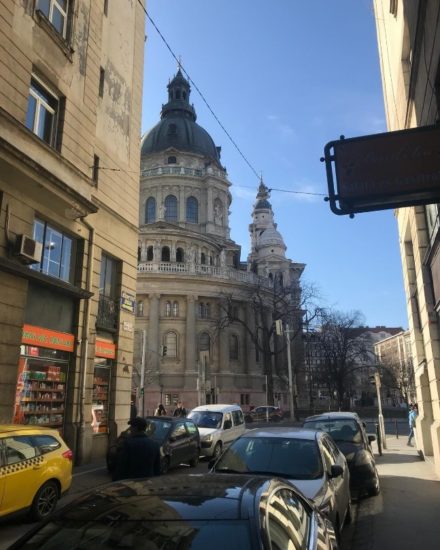Budapest Side Trip!
Guest Post by: Finance Graduating Senior Cody Martinson. He is a Undergraduate student who participated on a Foster Exchange at Bocconi University in Milan, Italy for Spring Semester 2019.
One of the first trips I ever took while on exchange was to the Hungarian capital city of Budapest. A wild trip that would see our group of eight also travel to Prague and Vienna in a five-day span, Budapest was the leg of the trip that has stuck with me the most for multiple reasons. A beautiful city with delicious food and friendly people, Budapest was a terrific time.

Everything about Budapest mesmerized me. From the utterly normal houses, already a change of pace from the low-rise apartment complexes that Milan and Paris were chock-full of, on the drive into the city, to the architecture of the buildings once we got into the city everything had a simplistic, rustic beauty to it. Of course it wasn’t just the normal buildings of the city that captivated me, the religious buildings in Budapest were of astonishing beauty, such as the Szent Istvan Bazilika right outside our AirBnB and the Dohany Street Synagogue that was just a 15 minute walk away. The most beautiful sight that I captured during my time in Budapest, however, came from the Citadel on the Buda side of the city. Like many cities, if you were to look over its nightscape from above you get a sense of beauty that’s unmistakable, and let me tell you, Budapest’s embodied beauty. The brightly lit and more urban Pest, the quieter and more rustic Buda, and the mighty Danube that separated the two old cities, the image of it is still as vivid in my mind as the day I saw it.

One of the most relaxing traditions of Budapest that I had the opportunity to experience were the public baths. Kind of like a cheap spa, the public baths were a collection of hot tubs, cold tubs, saunas, and steam rooms. Initially, our group just saw it as a fun way to end our trip to Budapest, I mean, chilling in a hot tub is always a relaxing time and given that we had two more cities to hit in the next four days, including a seven-hour bus that night, and how busy we’d been for the last month, we needed a de-stressor. What we didn’t expect of it was how much of an experience it’d actually be. As we jumped between the steam rooms and the hot pools, one of which had a really nice view of the Budapest nightscape and Danube, we found ourselves conversing with multiple locals who used the bath on a regular basis, and other travelers who found themselves there for much the same reason we did. The beauty of being able to completely unwind while learning about different walks of life was truly a shining moment of my study abroad experience.
I want to end my bit on Budapest not talking about food, as I initially wanted to because it was super tasty, but about the House of Terror, a museum dedicated to the tragedies the city experienced at the hands of the Nazis and Soviets. Housed in what was once part of the Nazi and later Soviet headquarters, the Terror Haza is an unassuming building (ignoring the signage) on one of the most important streets of the city. Once you’ve entered it however, you’re hit by the somber nature of the museum. Greeted by a Soviet era tank in a pool of water with a wall with the faces of all of the recorded victims of the two totalitarian regimes, the feeling that permeates the building is depressing. Travelling the rooms of the museum, starting from the top, you’re exposed to videos, audio, and images from the holocaust and Soviet eras, stories of the oppression faced by the Hungarian people cast an incredibly heavy air throughout every room of the building. Descending to the basement one can see the actual rooms that prisoners were kept in, one literally small as small as a broom closet and others with a layer of water covering the floor so the prisoners could never lie down in peace. However, beyond the depressing points, there were also stories of hope and resilience, stories of those who fought back and those who stuck it out through the pain, a bright point in all the darkness. By far one of the most impactful museums I’ve visited, similar to the Hiroshima peace museum in Japan and the Manzanar internment museum in California, if you’re ever in Budapest, I couldn’t recommend this museum enough.

